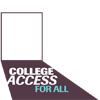
For a special Commentary section on College Access for All, Education Week asked five education thought leaders to share their priorities for encouraging college access for all students.
Karina Madrigal

- Increased communication between educators in the K-12 community, particularly those in high schools, and those on the higher education side
- Dual-enrollment courses that enable high school students to earn college credits before they earn their high school diplomas
- Efforts aimed at easing students’ transitions from high school to college
More from Karina Madrigal: “A College-Access Success Story”
Nicolás González

- Collaborative, tangible partnerships between high schools and higher education institutions
- Affordable or no-cost dual-credit college classes offered in high schools during the school day
- Parental, school, and college support of students, with high expectations for academic advancement
More from Nicolás González: “Creating Opportunity for College Access”
Heath E. Morrison

- Career-preparedness initiatives for high school students that ensure students are ready for success after they graduate
- Customized learning tailored to the needs of individual students and their aspirations
- High school guidance counseling to make sure students are aware of their higher education and career options
More from Heath E. Morrison: “College Prep Is Career Prep”
Lindsey E. Malcom-Piqueux

- State and local government initiatives to ensure equal opportunity for college readiness and adequate K-12 resources, including high-quality teachers, for all
- Strengthened federal and state programs for need-based grant and financial aid to attend college
- Partnerships between K-12 educators and those in higher education to provide students and families with early access to information about college costs and financial aid
More from Lindsey E. Malcom-Piqueux: “Colleges Must Reach Out to Younger Students”
Shirley Franklin

- High-quality early-learning programs, starting at birth, to help put children on the path to later academic success
- Investments in housing and community wellness to improve education from cradle to career and break cycles of poverty
- Unconventional solutions for high-risk students that address all their needs through wraparound services
More from Shirley Franklin: “Atlanta’s Former Mayor Reflects on Education Legacy”




